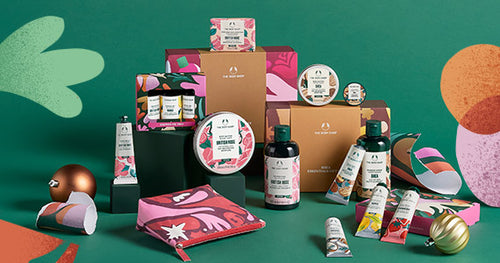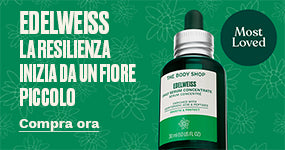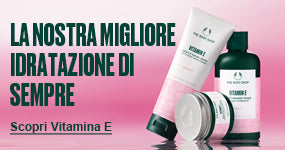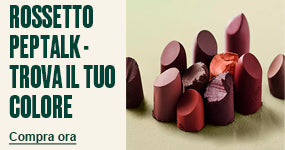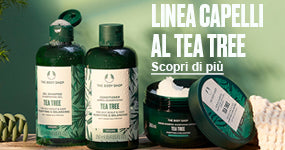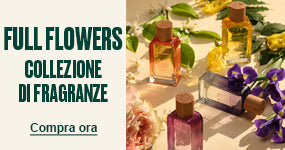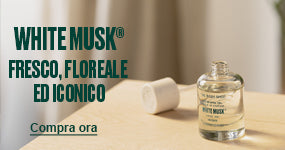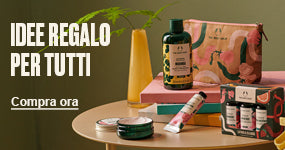
YOUR QUICK-START GUIDE TO OUR INGREDIENTS
ABOUT OUR INGREDIENTS
We’re committed to being an honest company, and we’ll always be straight with you about the products you love. We want to create products that deliver real benefits, while doing minimal harm to the environment. Our products are carefully assessed by independent experts so we know they’re safe, and here you can discover a little more about what goes into them.

WHAT TYPES OF INGREDIENTS DO WE USE?
We aim to use sustainably sourced, natural ingredients and ingredients of natural origin wherever we can. We try to use environmentally friendly synthetic ingredients, too. We aim to use ingredients that were developed using green chemistry, which are processes that reduce the use or production of chemicals that damage the environment. Over the past couple of years, we’ve taken steps to improve the environmental footprint of our formulas. We’re really focussing on the sustainability of our natural ingredients and ingredients of natural origin, and we’re looking at their biodegradability, too.
NATURAL INGREDIENTS
Natural ingredients come directly from plants and minerals, and also through processes without chemical modification (that means, we haven’t deliberately changed them).
We source some natural ingredients, like shea butter from Ghana and tea tree oil from Kenya, through our Community Fair Trade programme. Community Fair Trade was launched in 1987, to trading fairly with suppliers, offering good trading practices and fair prices.
INGREDIENTS OF NATURAL ORIGIN
Our products also contain ingredients of natural origin. These originally come from plants or minerals, but have been treated a little more than natural ingredients (or mixed with some non-natural ingredients) to make them suitable for use in cosmetic products. One of the requirements for plant-based ingredients of natural origin is that they must be renewable. This means they must come from sources that are abundant and self-generating, unlike fossil fuels, which take millions of years to replenish.

SYNTHETIC INGREDIENTS
We use every ingredient for a reason: to give you the best experience with our products. That’s why we also use synthetic ingredients, which are human-made and created by chemical reactions. Synthetic ingredients can give our formulas properties that nature simply can’t provide, like preserving products (making sure they last longer). An example of a synthetic ingredient is isononyl isononanoate, a synthetic oil that helps maintain the skin’s moisture after applying cream. It’s not as heavy on the skin as vegetable oils and is highly biodegradable, with a low ecotoxicity profile, meaning it’s not harmful to the environment.
Another example is Trisodium Ethylenediamine Disuccinate, which has much better biodegradability than EDTA (Ethylenediaminetetraacetic acid), the standard chelating agent. This type of ingredient acts like a sponge, helping to stabilise and preserve the product. Synthetic alternatives to natural ingredients can help with the consistency (think, nice textures), quality and long-term performance of a product.

WHAT’S THE DIFFERENCE BETWEEN NATURAL INGREDIENTS AND INGREDIENTS OF NATURAL ORIGIN?
Natural ingredients come from plants and minerals, and use low-impact processing methods like cold-pressing. Ingredients of natural origin originally come from plants and minerals, but have been modified in some way to make them more functional or safer. A good example is refined sunflower oil. Crude edible oil from renewable sources contains impurities, which we remove during the refining process.
These definitions are based on guidelines for cosmetics defined by the International Organization for Standardization, an independent, international, not-for-profit organisation.

REGENERATIVE NATURAL INGREDIENTS
Today, conventional intensive farming is putting a strain on our natural resources. It has degraded soil, created a lack of biodiversity, turned many forested areas into barren land, as well as having a negative impact on the health and wellbeing of surrounding communities. Imagine buying a product that has only a positive impact on the environment and the people who helped make it – that’s our vision.
We want to use natural ingredients based on regenerative farming that supports the regeneration of ecosystems and are currently assessing our portfolio to align it to be a regenerative business in the next decade. It seeks to reverse deforestation, restore degraded soil, increase biodiversity, improve water cycles and revitalise communities. Making sure the ingredients we use are produced in a way that has a net positive impact on the environment and on people will be hard but we are committed to getting there and are excited about the journey. This is why we call them ‘regenerative natural ingredients’.

HOW DO WE TEST OUR PRODUCTS?
We use experts who have a detailed understanding of raw materials and their uses, and every formula safety profile is independently assessed by a third party. They skilfully combine ingredients to create safe formulas that respect our customers’ skin, respect the environment and do what they say they do. Our products undergo extensive testing to ensure they’re safe and effective for use. We use three main testing methods involving computer data, laboratory-created tissues and people.


THE INGREDIENTS YOU’VE BEEN ASKING ABOUT
We know that some cosmetic ingredients are confusing, and even controversial.You deserve to know exactly what you’re putting on your skin, so we’ve broken it down for you – here’s what we use, and why.
PALM OIL
Palm oil is emollient that provides moisturisation and a smooth skin feel. Palm derivatives can play different roles in products including being an emulsifier, which holds oil and water together, or a surfactant, which helps create foam.
We have a target of 100% traceable and/or certified palm by 2025. We buy both physically certified palm oil and RSPO smallholder credits, which support rural communities in Indonesia grow oil palm sustainably and helps improve their livelihoods.
PROPYLENE GLYCOL
Propylene glycol is used as a humectant, which means it holds onto water on the surface of your skin, keeping it moisturised for longer. There are misconceptions about this ingredient because of its use in other industries, at much higher levels than we use. In our products, it’s completely safe.
MICA
Mica is a mineral that makes products sparkly and white. You may have heard some controversy about mica and unsafe working conditions – but don’t worry. In line with our sustainable sourcing policy on Indian mica, our suppliers must demonstrate to us that they work exclusively in gated mines, which don’t allow children to enter, to prevent child labour. They also can’t buy mica collected informally. Our suppliers conduct independent social audits and invest in their communities, too.
BHT (BUTYLATED HYDROXYTOLUENE)
We don’t directly add BHT to our products; we only use it if it’s already present in another ingredient. Our raw material suppliers use BHT as an antioxidant, which stabilises ingredients to stop them from going off when the product is opened and closed often. However, there are suitable alternatives available on the market, so we so have decided to not use this ingredient in new products, and will actively remove it from our existing products. This will take a bit more time.
PARABENS
We use some types of parabens as preservatives in some of our products, so you can use them for longer.We’ve heard your concerns about parabens. We want you to love our products, so we’ve committed to phasing out parabens and are doing so in a steady process.
LANOLIN
Lanolin is used as a moisturiser, and it comes from sheep’s wool. The lanolin is gathered after the sheep have been shorn. However, we are creating more and more vegan products, so it makes sense for us to stop using lanolin. All new products are made without lanolin, and we’re removing it from our existing products, too.
EDTA
EDTA is a chelating agent, which means it acts like a sponge, helping to stabilise and preserve products. We’ve always heavily restricted the use of EDTA in our products, as it isn’t the best ingredient for our oceans and rivers, so we’re considering alternatives.
DIMETHICONE
Dimethicone is a type of silicone that plays an important role in certain products to enhance smooth application. We use it instead of other types of silicones that have poorer environmental profiles.


